This post includes everything you need to make a perfect French Cheese board. With a focus on quality, not quantity, a French board is simple to make with a few tips!
3 well chosen cheeses, a few slices of apple and some dried fruits, a little bowl of honey and perhaps some fig jam et voilà! It can be that simple. No need to fill the entire board full of intricately displayed items either, a French cheese board lets the cheese be the star of the show - it needs space to breathe.
In France the cheese and charcuterie are kept separate (more about this below) but if you want some tips on how to build an epic Charcuterie Board check out this post: How to make a French Charcuterie Board
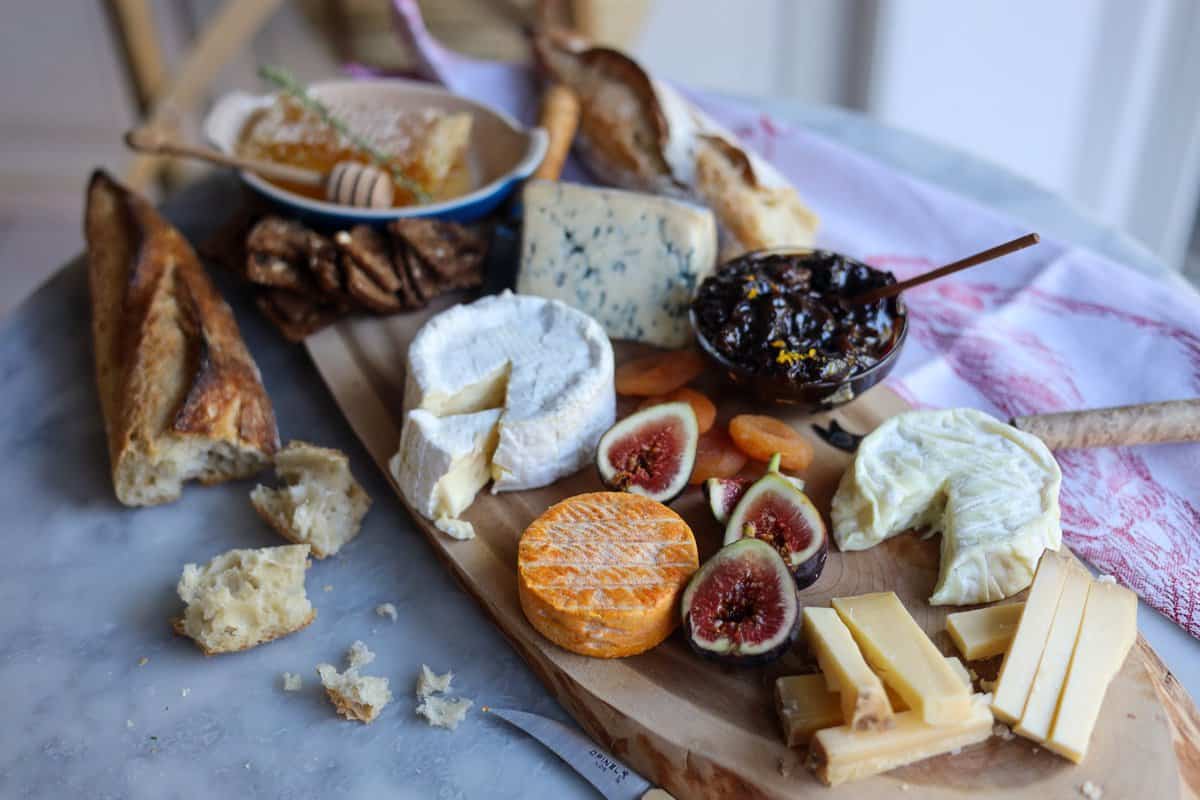
J'Adore! Would you like to save this recipe?
French cheeses
It is an understatement to say that the French love their cheese. Did you know that there are over 1000 types of cheese made in France? More than the different regions of France! Each region has multiple cheeses they are proud of. Fortunately, we can find many of these cheeses in the United States, you just have to know what you are looking for.

When to serve the cheese course?
If you are hosting friends for an aperitif, or cocktail hour, it is perfectly acceptable to put the cheese out at the start. However, if you are hosting a dinner party, the cheese is typically served after the main course and before (or in lieu) of the dessert.
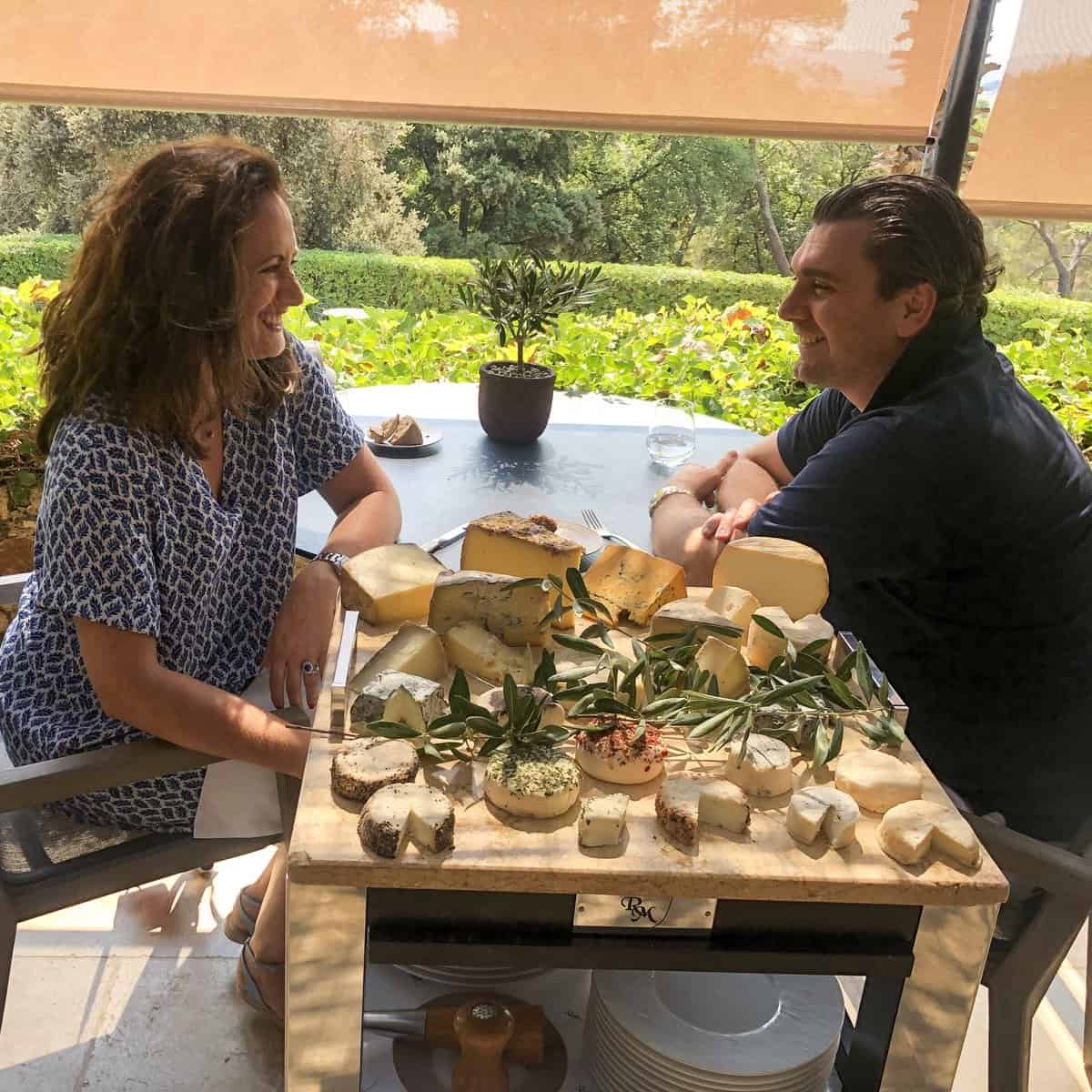
7 Rules for French Cheese Boards
The French are great at making universally accepted general rules about things, especially food, so I thought I would break it down to a set of 7 rules to keep in mind when making a French Cheese Platter

Rule 1: The rule of 3's.
The French like to serve an odd number of cheeses, as it is considered more esthetically pleasing. You will often see a selection of 3, 5 or 7 cheeses at a fancy French restaurant.
If you are serving for 2 couples for a small dinner party, go with 3 cheeses, any more guests and I like to serve 5 cheeses. 7 just seems like too much cheese... if that is a thing? Maybe not.

Rule 2: Always serve a separate knife for each cheese.
The knife used for a creamy Camembert will get gooey quickly and well, the knife for blue cheese really shouldn't touch anything else. If you have a cheese knife set, feel free to use the appropriate knife for each cheese.
A butter knife works well for most cheeses except the really hard ones - I suggest cutting slices of comté or gruyere in advance to make it easy for your guests. Mont D'or is very runny can be served with a soup spoon.
Rule 3: Hard, soft and stinky.
I keep this in mind when I am building a French cheese board. I always make sure to select a hard cheese (like Comte, Beaufort, Gruyere), a soft cheese (Brie, Camembert, Chèvre - goat cheese) and a stinky cheese such as a Roquefort or Bleu d'Auvergne.
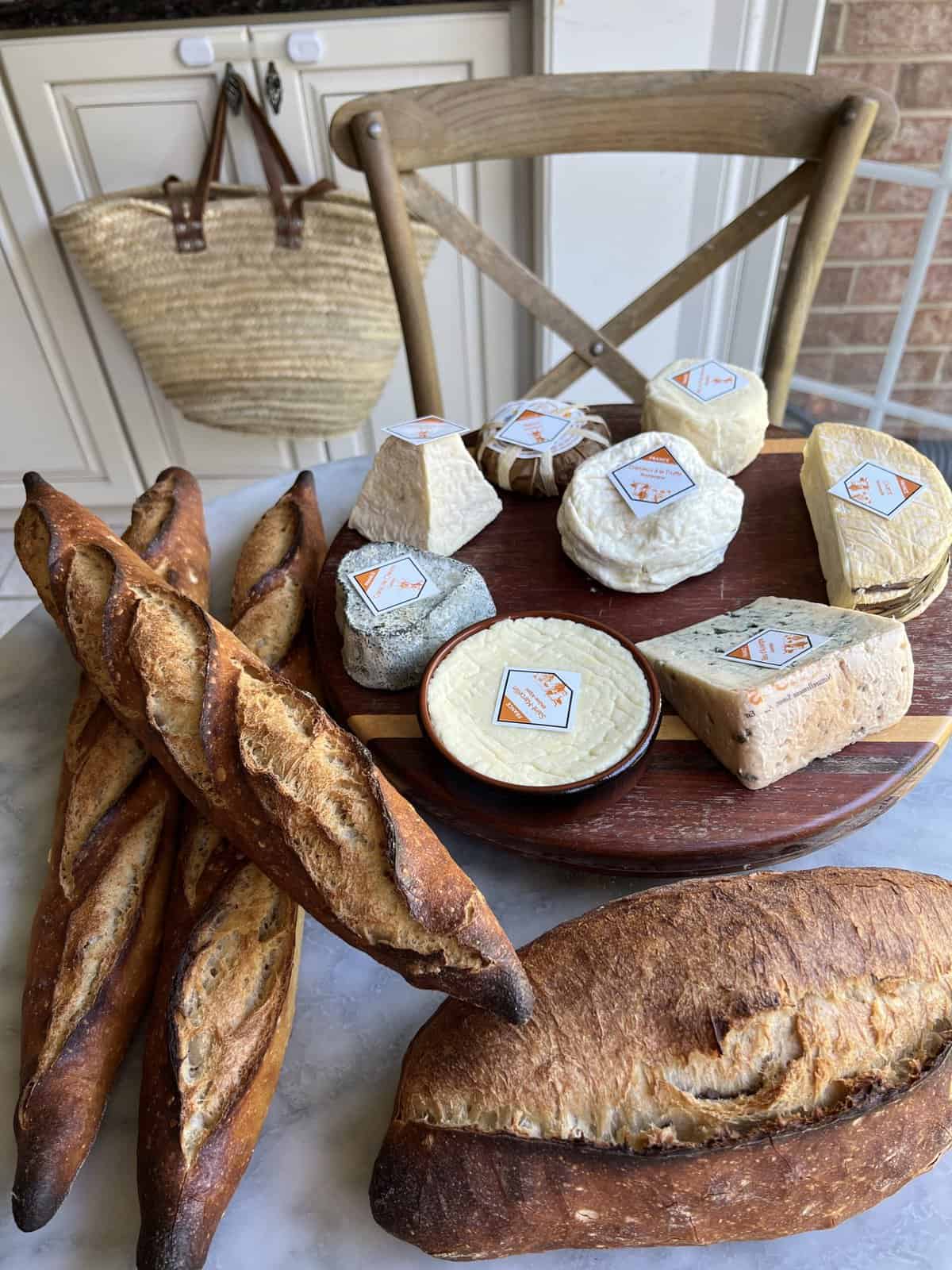
Rule 4: Serve cheese at Room temperature
Make sure to set out your cheeses (free from their wrappers) on a board before about an hour before guests arrive so that they are deliciously warm and gooey by the time you wish to serve them.
Rule 5: How to cut the cheese...literally.
The idea behind the precise ways to cut cheese to make sure everyone gets the same quality of bite. NEVER cut the tip off a slice of brie - it means you are taking the best part of the cheese all for yourself. Triple cream Brie and other cheeses that are served in a pizza slice shape should be cut length wise, so everyone gets the same rind to ooey gooey insides ratio.
Round cheeses, such as a crottin de chavignol, or camembert, should be cut like a slice of pie, again making sure everyone gets the same ratio of good cheese.
Rule 6: What order to eat cheese?
Start with the mildest cheese (usually a soft chèvre) and work your way up to the most fragrant cheese (most likely the blue cheese). This way your palate can adapt to each one.
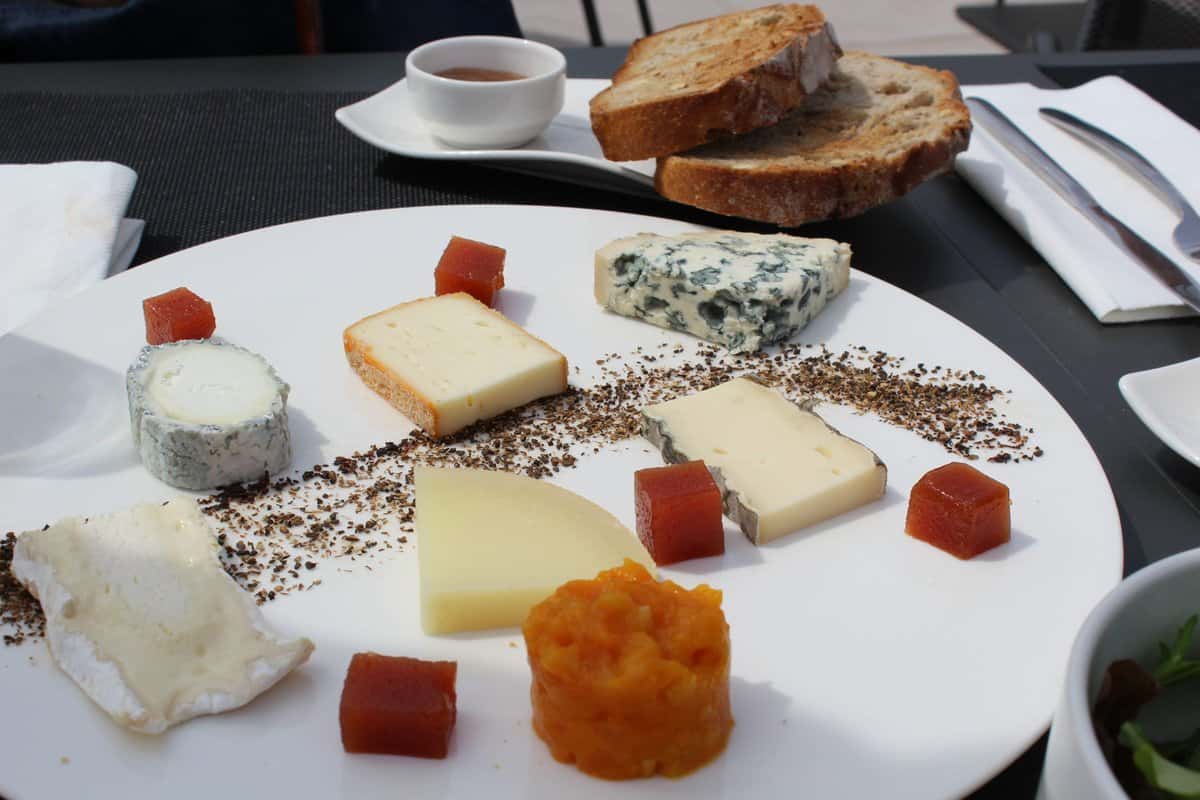
Rule 7: Where to place the cheese on a French cheese plate?
If you are serving the cheese to your guests place the mildest cheese at 12 o'clock on the plate and then place the subsequent cheeses in the order that they should be eate. (see rule 7), leaving space in the middle of the plate for a spoonful of jam and a few slices of fruit.
What to serve with a Plateau Fromages?
A selection of jams, fruit (stewed fruit, dried fruit or fresh fruit) and nuts is customary for a cheese board. French cornichons, mustard and olives is better served with a charcuterie board.
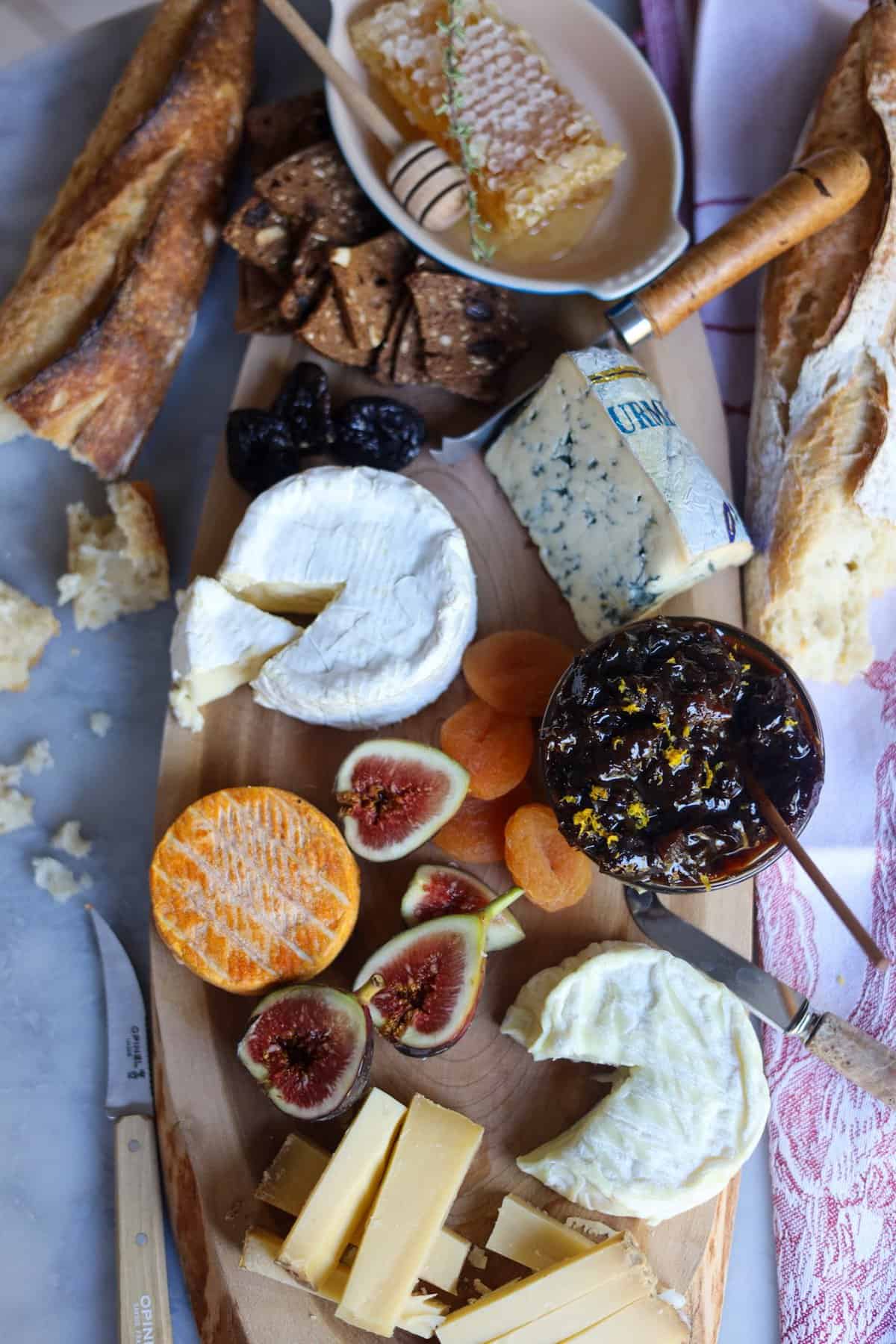
Fruit: Sliced plums or apples, whatever is in season. Sliced apple does deliciously with the nutty flavor of Comté.
Nuts: Cracked Walnuts go beautifully with blue cheese. Almonds or hazelnuts also bring out the flavor of a hard cheese.
Jams: a homemade compote of prunes (I made this one with California prunes) and Grand Marnier goes so beautifully with Camembert. Fig jam or apricot jam also works beautifully.
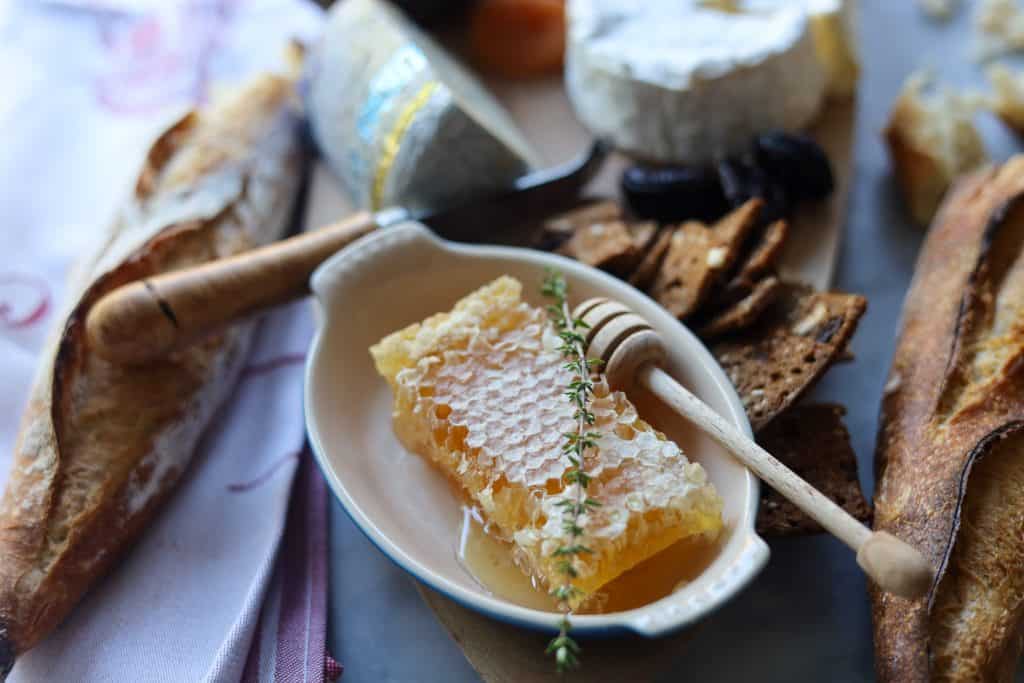
Honey: A piece of honeycomb adds irresistible beauty to a cheese platter. The honey goes very well with brie, goat cheese or else a sharp, aged cheese. I also enjoy a lavender honey for its subtle floral notes.
Fresh baguette - if you are looking for a super simple homemade recipe, check out my 2 hour Baguettes for Beginners recipe here. Sourdough bread also pairs beautifully, especially with a sharp cheese.
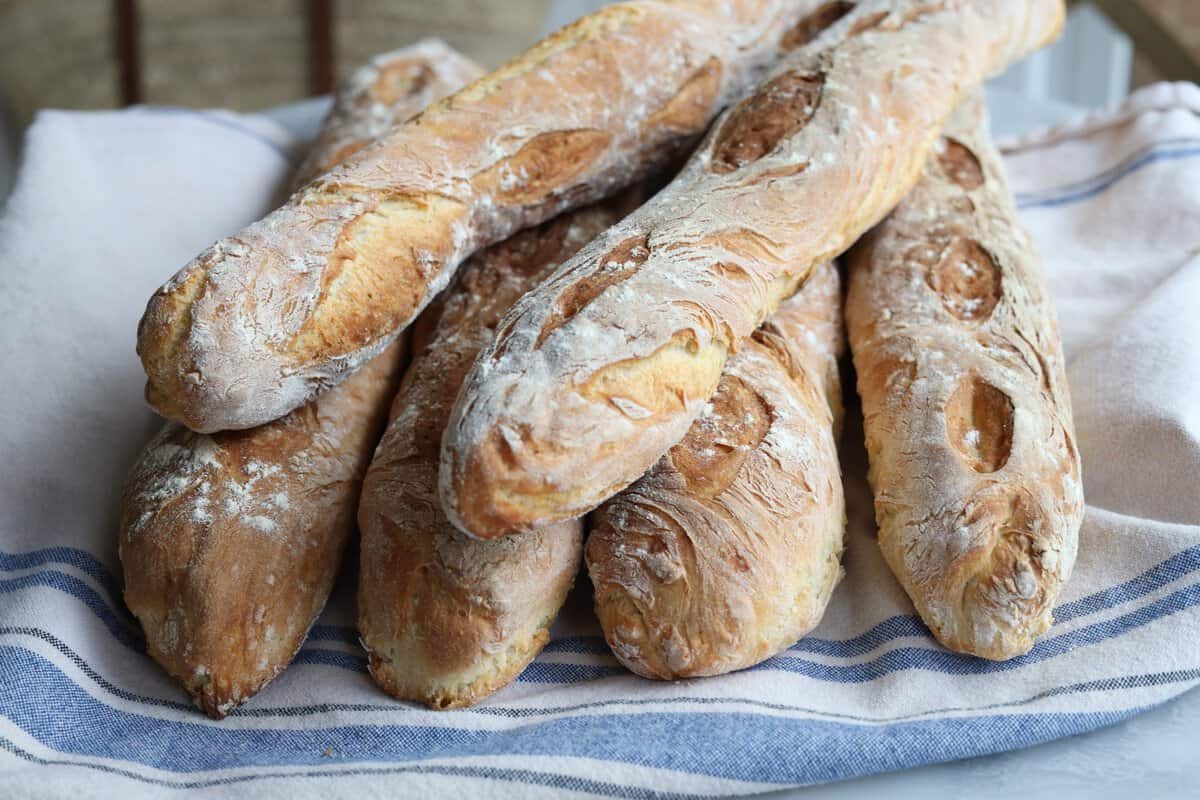
Can I put cheese and charcuterie together?
You absolutely can, but the French don't. A Charcuterie platter is seen as an appetizer, cheese is served at the end of the meal, before dessert. I wrote an entire article about how to make a French Charcuterie Board if you would like more information.
What is French for cheese?
Fromage! Plateau de Fromages is "French cheese board"
Cheese plate in French?
Assiette de fromages. Plateau de fromages is Cheese platter.
Where to buy French Cheese:
In France, quality cheese is everywhere! You can go to the local cheese shop or else the daily farmer's market for an incredible selection of cheese.
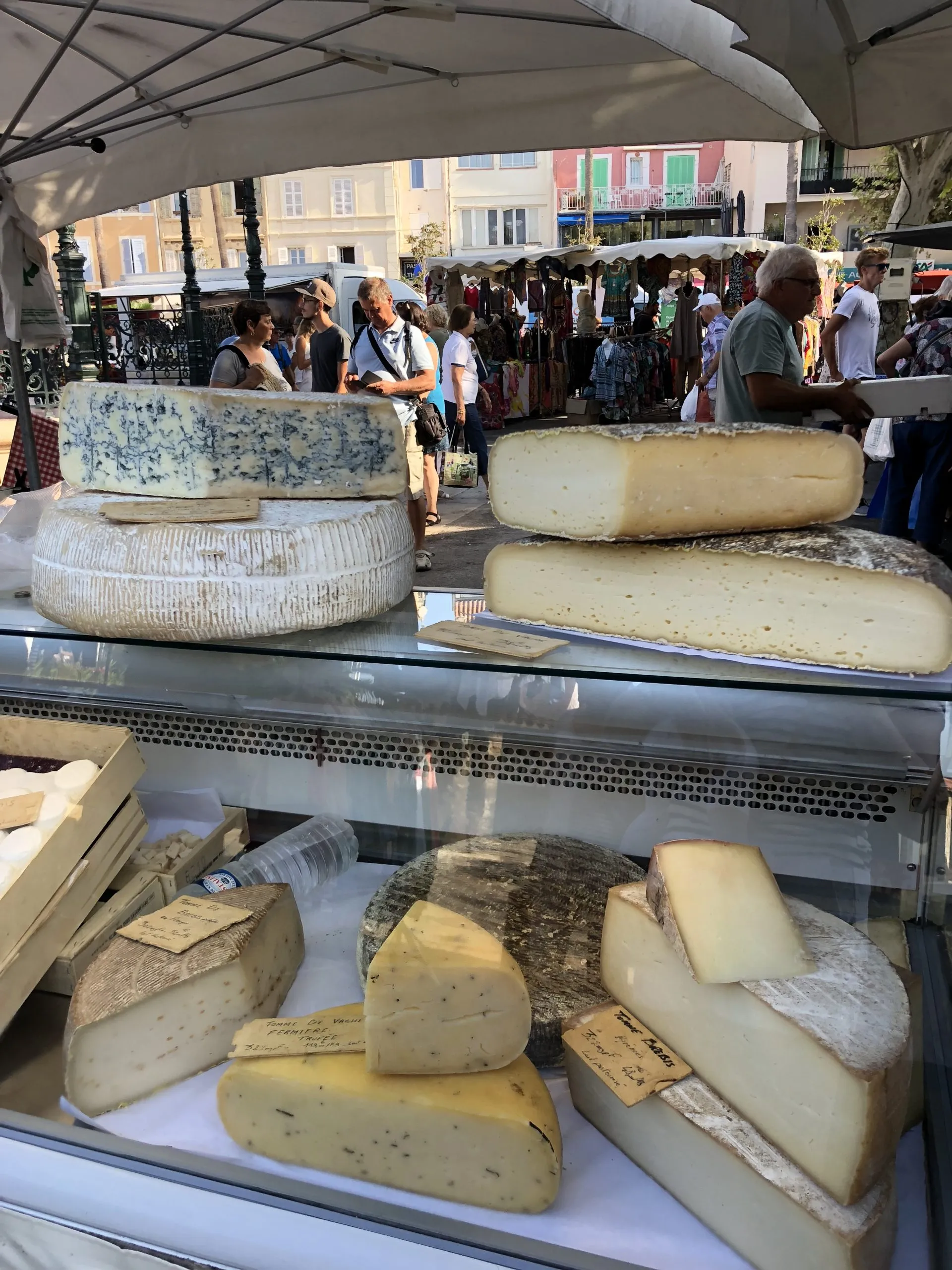
In the US, we can sometimes find really good local cheese at the Farmer's markets. If you have a specialty gourmet shop near you (in Northern Virginia I am blessed to have easy access to Arrowine and also Balducci's cheese counters) you can find many high quality cheeses.
I have also been very impressed with what we have ordered from Fromages.com and it is delivered to your door.
Cheese selection for beginners: What kind of cheese to serve?
I highly recommend going to a gourmet shop or ordering online (several French brands offer home delivery) to get the best selection of cheeses. If you only have access to Trader Joes, Target or your local grocery store, I would go with the following:
1) A Brie or Camembert
2) A Soft log of Chevre (the honey chevre at Trader Joes is delicious)
3) Comté or Gruyere
Optional:
4) A blue cheese
What to avoid: Any industrial cheeses. Waxy cheddar or mozzarella in a brick shape is not authentic for a French Cheese Board.
The 7 types of Cheese in France
Most cheeses fall into the following 7 categories. Choosing a cheese from each category makes for a fantastic cheese board. Everyone will find something they like!
White Mould Cheese
- Camembert
- Brie de Meaux
Washed Rind Cheese
- Epoisses
- Livarot
- Munster
- Pont L'eveque
- Langres (one of my favorites)
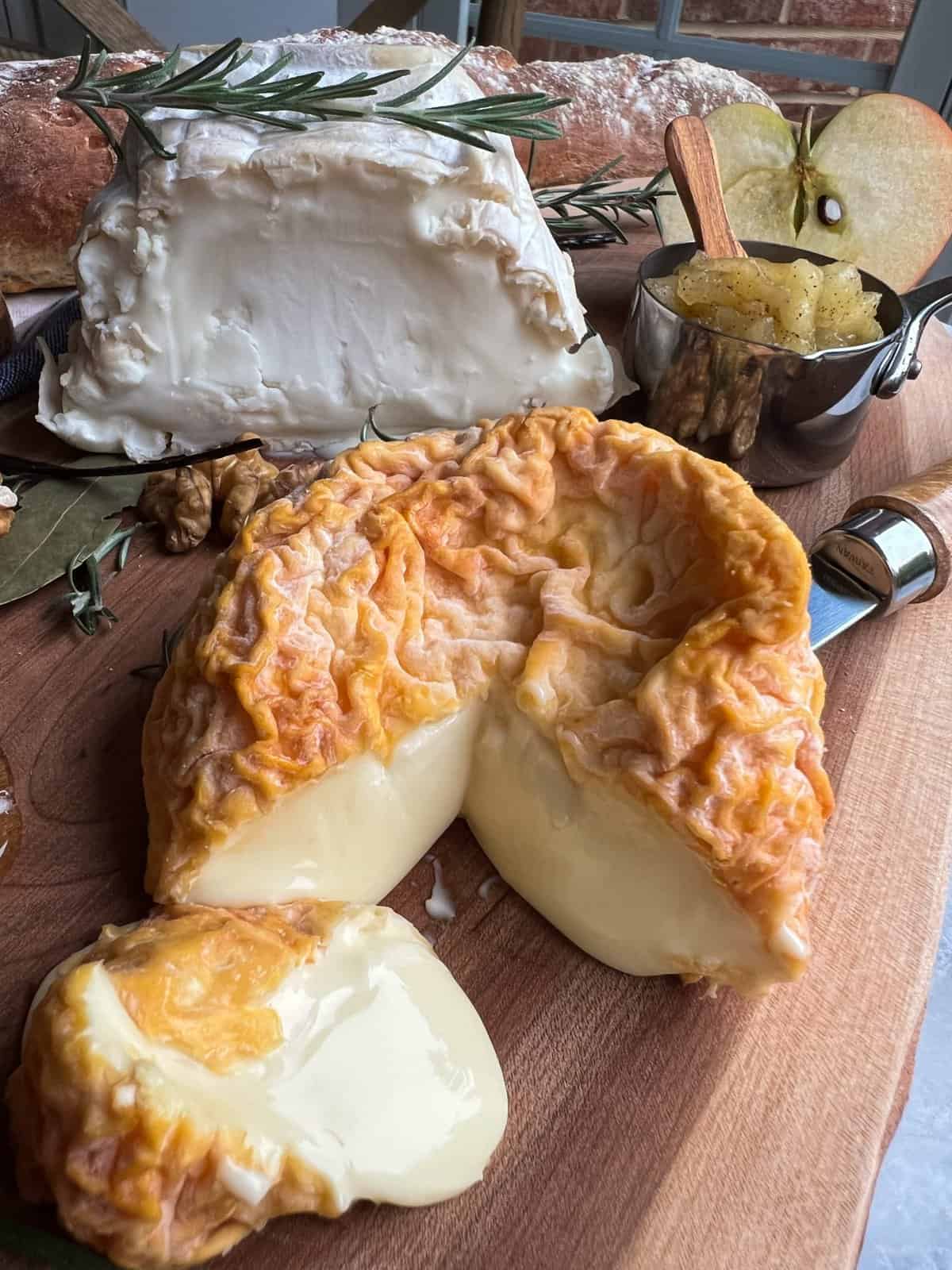
Goat's milk Cheese
- Saint Maure
- Touraine
- Crottin de Chavignol
- Chabichou du Poitou
Sheep's milk Cheese
- Ossau Iraty
Uncooked semi-hard cheese
- Raclette
- Tomme
- Morbier

Hard Cheese
- Comté (also a favorite)
- Beaufort
- Mimolette (the bright orange one that looks almost like cheddar)
Blue Cheese
- Roquefort
- Bleu D'Auvergne
- Fourme d'Ambert
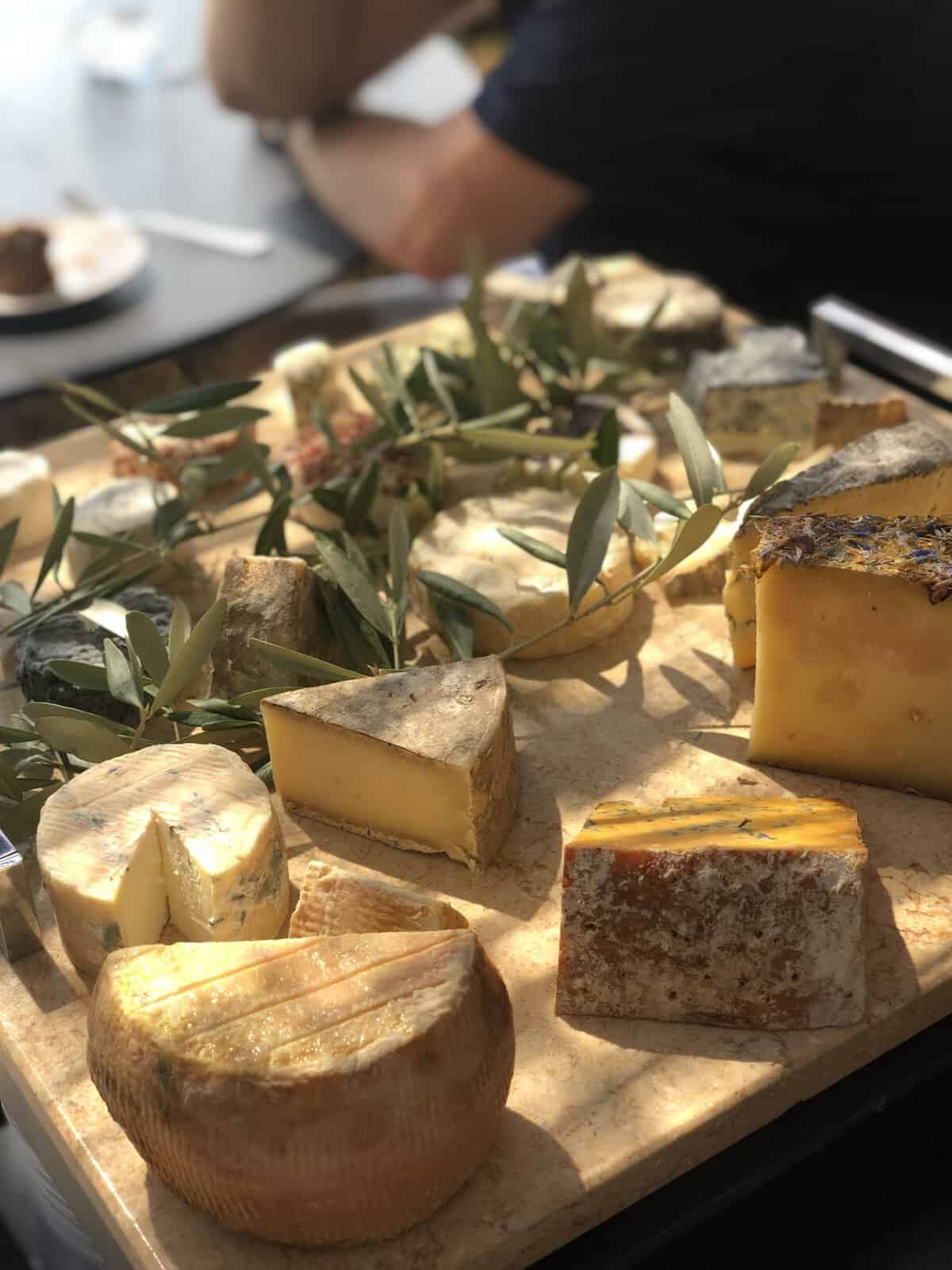
Once you have dipped your toe into the endless sea that is French cheese, I encourage you to continue to try new cheeses. An easy way to try something new is to visit a cheese counter and simply ask. Tell them what you like and that you want to try something new. Most people are more than happy to help.
Wines to Pair with a French Cheese Board:
Most Naturally, French wine is meant to be paired with French cheese. You will also find that the cheeses and wine produced in the same region go beautifully together. Have you tried Comté with wine from the Jura region? Magnifique!
Many people pair red wine with the cheese course, simply because it is what is leftover from the main course. That being said, a bright, acidic champagne is a pure delight with a creamy goat cheese or double crème brie.
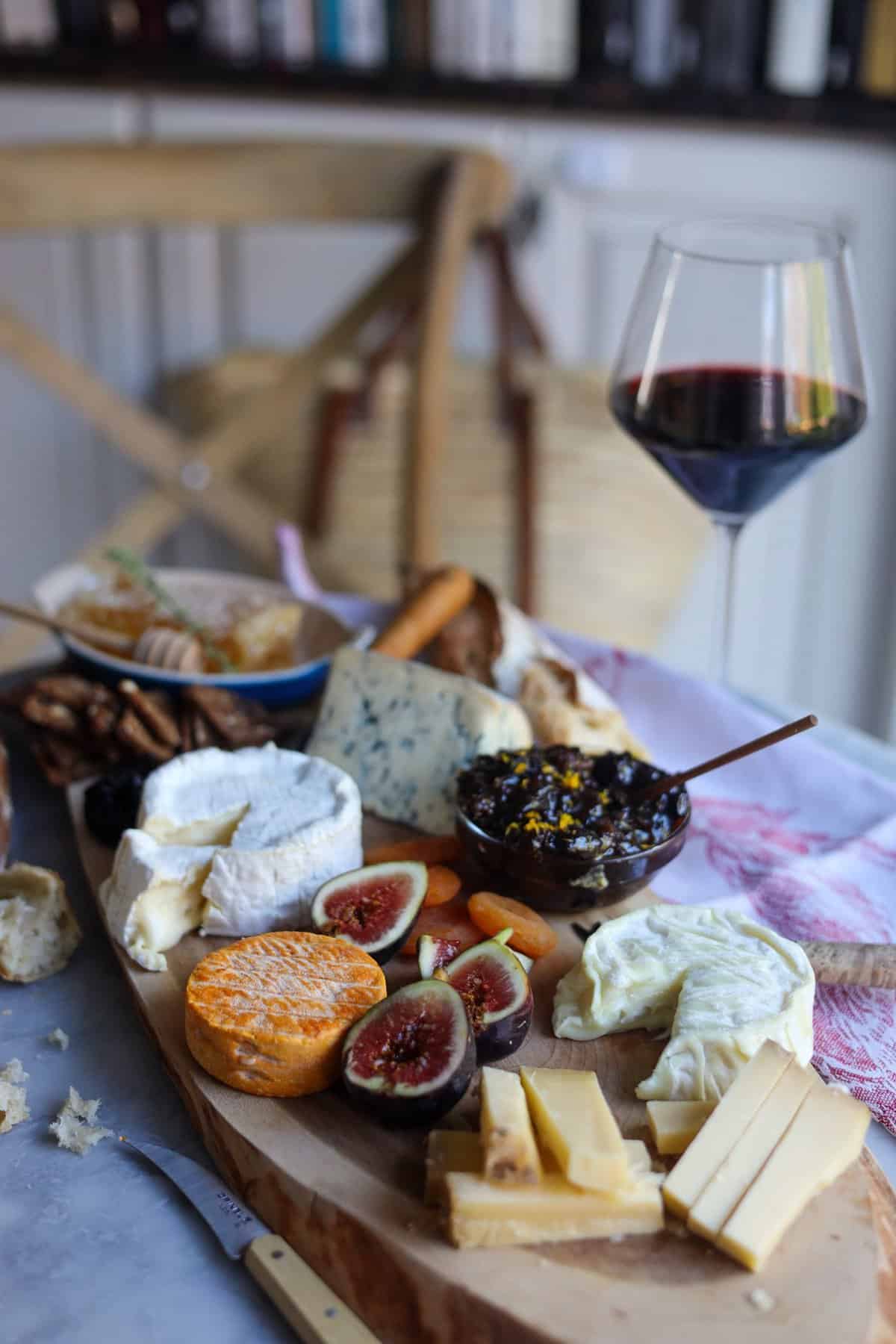
Red Wine with cheese:
Pinot noir is the most versatile - it goes well with a hard goat cheese or a hard cow cheese. A robust Bordeaux or Syrah from the Rhone valley pair deliciously with a hard goat cheese, hard cow cheese or sheep's milk cheese
White Wine with cheese:
Sancerre (Sauvignon Blanc) or Chablis (Chardonnay) pair wonderfully with a hard or soft goat cheese, as does Champagne.
Fortified Wine with cheese:
Sauternes, Tokaji or Port pair beautifully with a Blue cheese
Cheese lover recipes on Lechefswife.com
If you love Cheese you will love these recipes:

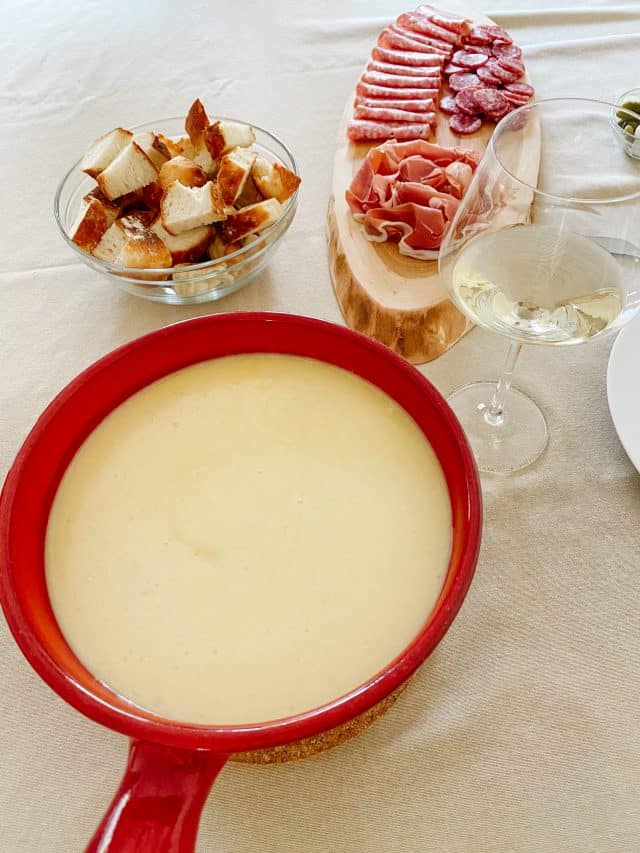
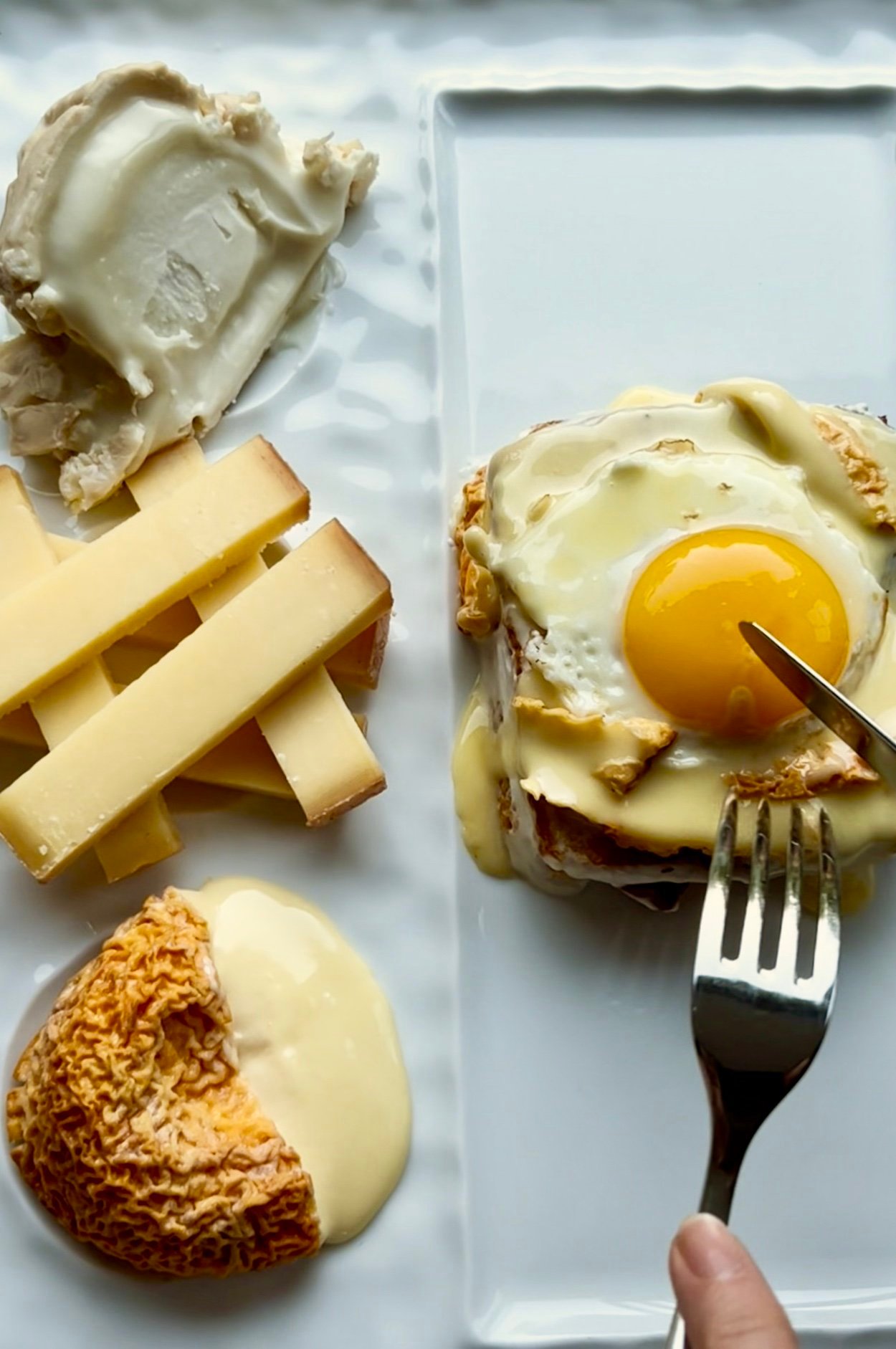
Cocktail Dînatoire
Looking for an easy, but chic, way to host friends at home without lots of cooking? A cocktail dînatoire, also known as an apéro dînatoire, brings guests together over food and drink in a more casual setting than a dinner party. There is no assigned seating and you can help yourself to as much (or as little) as you want. A cocktail dinatoire is family friendly too. This blog post will walk you through how to host a cocktail dinatoire, step by step.
FAQ
Go for an odd number—3, 5, or 7 cheeses make the most pleasing display. For a small gathering I favour 3 cheeses, and as guests increase I move to 5.
I recommend picking one hard (like Comté), one soft (such as Camembert) and one “stinky” or blue cheese (for example Bleu d’Auvergne) so there is variety of texture and flavour.
Take the cheeses out of the refrigerator about an hour before serving so they come to room temperature—this ensures their aromas and textures shine. Also use a separate knife for each cheese to preserve flavour and appearance.
In French tradition the cheese course comes after the main meal and before (or instead of) dessert—not right at the beginning. However, if you’re serving during an apéro or cocktail-style get-together it’s perfectly acceptable to present it earlier.
What is your favorite French cheese? I love to hear from you!
Bon appétit,
Le Chef's Wife
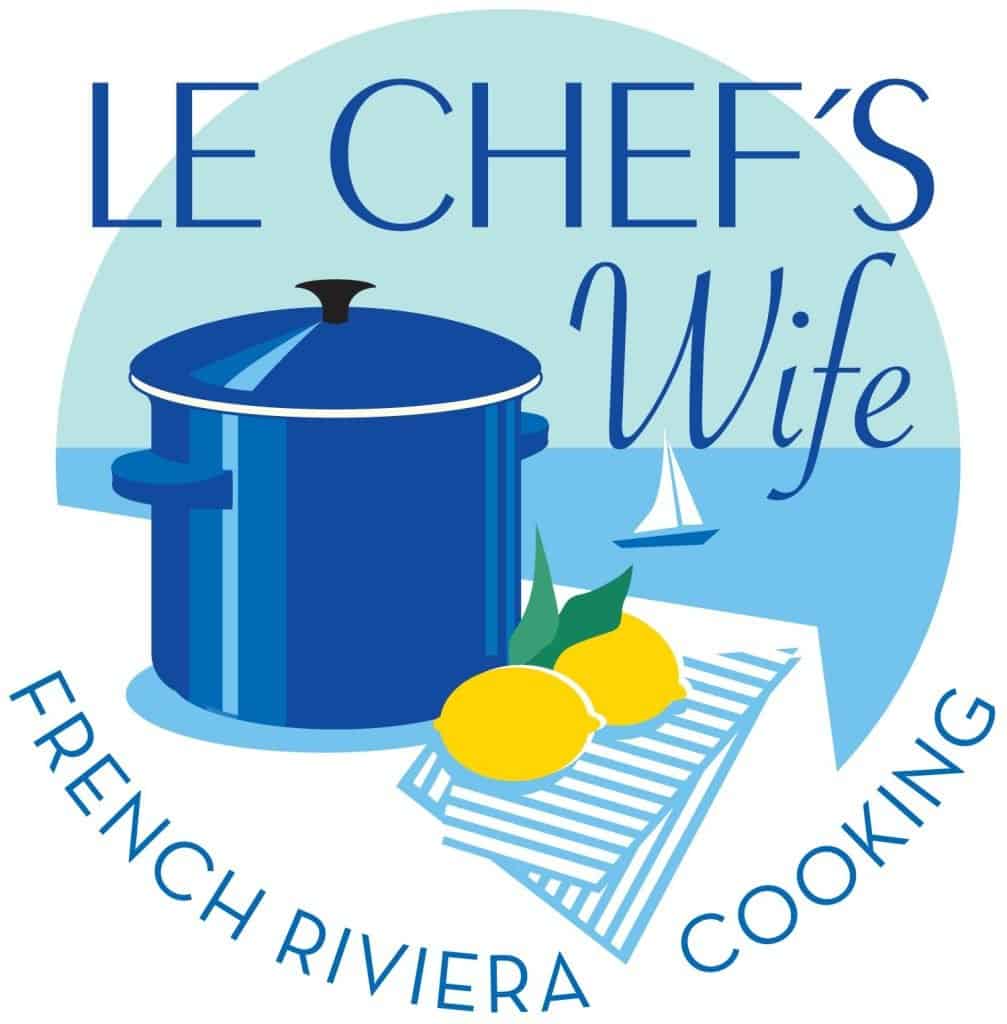
ABOUT LE CHEF'S WIFE
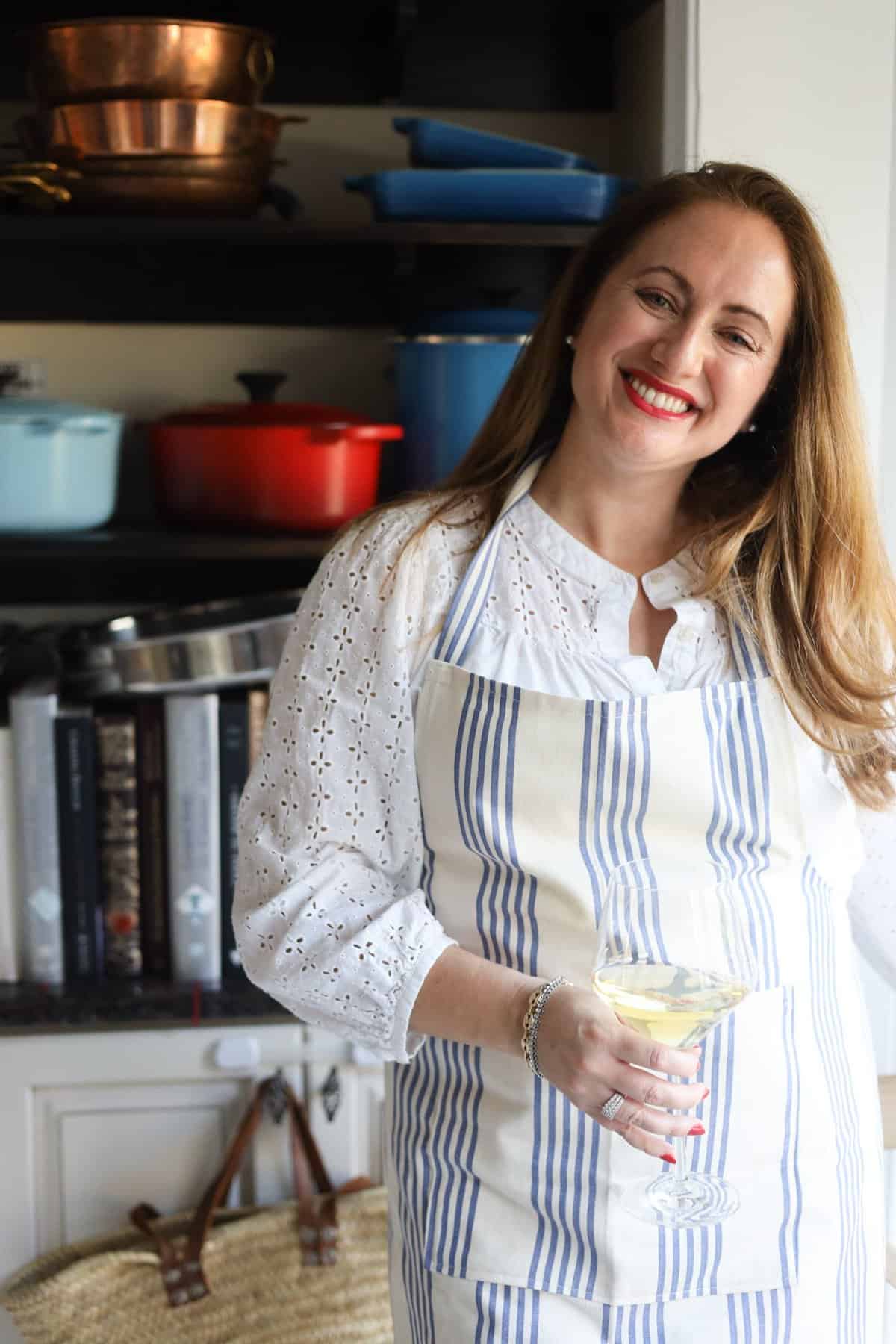
Bonjour! I am Anina Belle. I translate the fancy cooking of my Michelin-star trained French Chef Husband, Le Chef, into easy to make dishes that busy people with no culinary training (like me!) can make at home. We have two young kids (5 and 2) and I have a full time job in hospitality in addition to this blog. I strongly believe that even busy people deserve to eat well at home.
Look inside our Kitchen with this recent Washington Post Article. We were recently featured on the TODAY SHOW for our recipes of French Onion Soup Gratinée and Moelleux au Chocolat. You can watch our full segment here:
I share our home cooking on Instagram, pinterest and tiktok. Sign up for my newsletter to be the first to receive my new recipes and have advance access to cooking classes. I look forward to cooking with you!Sign Up for Le Chef's Wife Newsletter


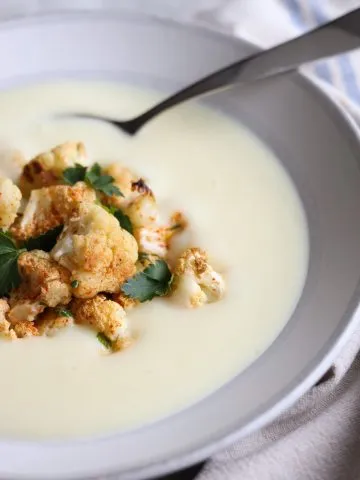
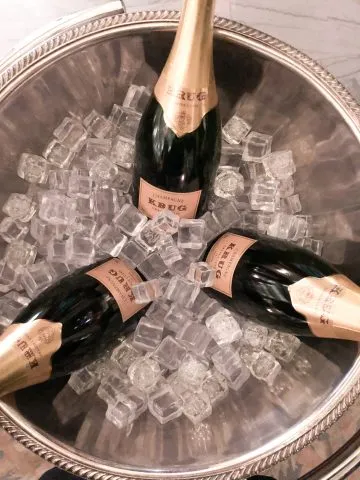

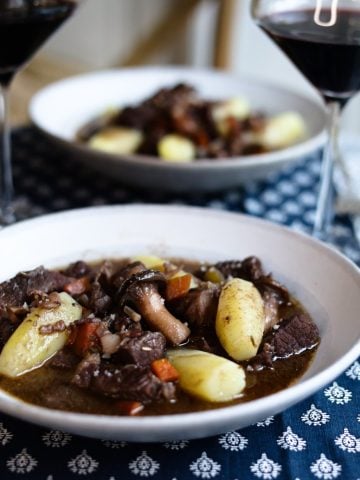
Carolyne says
Hello Anina Belle,
What a mouth watering article! Your tips on the number of cheeses per person, how to serve, how to cut them, and the preferred order are all very helpful.
Bon weekend!
Lisa says
My mouth is watering! Do you have a recipe for the prune and Grand Marnier compote?
Kathy says
Dear Anina,
This is the most useful and perfect guide to creating a proper French cheese board that I have ever seen. While I admire the elaborate creations that I have seen on Instagram, they are not like anything I’ve ever been served in France. Merci beaucoup!